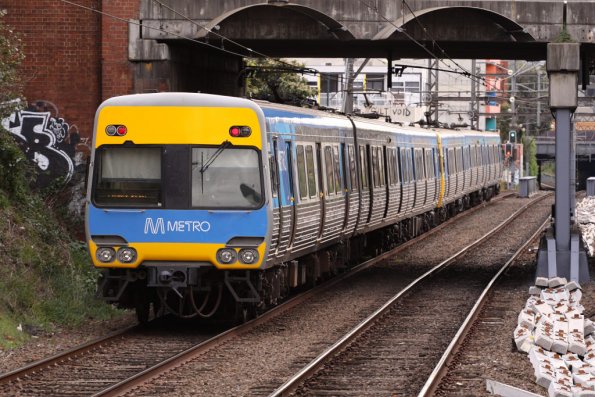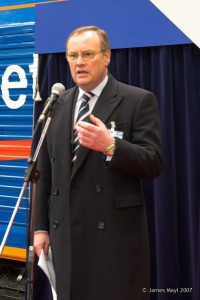Bungled timetable or saving us from Liberal deceit?

There have been a few news reports lately about the delayed new timetable.The Herald Scum didn’t appear to write a story, perhaps because they had already published Frankston Line Passengers angry at plans for trains to bypass the loop. Fairfax news wrote the headline as Train Delays as Andrews Government Bungles the Biggest Metro Timetable Boost In Years while the ABC provided a more balanced report with New Melbourne Train Timetable scrapped due to lack of consultation. Both missed the bigger story behind the delayed new timetable. This bigger story involves something called the Network Development Plan. (The Plan) The ‘Stage 2’ part of the Plan consisted of a ‘Metro Style System’ for Melbourne’s Trains.
WHAT IS A ‘METRO STYLE SYSTEM’?
This is where things get tricky. Nobody knows what a ‘Metro Style System’ is. Wikipedia’s article on Metro Train Systems pretty much sums up what Melbourne already has (or is at least working towards, with it’s grade separation projects). Public Transport Victoria (PTV) and Metro Trains Melbourne (MTM) had a different idea.
THE 5 RAILWAYS PLAN.
PTV and MTM’s idea of a Metro system is differently defined. PTV and MTM’s plan was to completely separate the network into 5 parts, 5 completely separate businesses that did not connect at all with each other.
THIS ISN’T THE FIRST TIME THAT THEY TRIED THIS.
When the Victorian Suburban Railways were handed over to private companies in 1999, the Suburban Rail Network was split into Hillside and Bayside trains. Train drivers who previously drove trains on the entire network were then limited to half the network. Management and support staff doubled as each position required duplication. This created numerous problems. If a problem occurred on the Hillside, there would be a shortage of train drivers there and a number of Bayside train drivers sitting idle. This sort of situation happened frequently. When National Express folded in 2002 and the Government decided to merge the two networks back together they discovered a number of problems. Train drivers on Hillside were no longer qualified to drive on Bayside and Bayside drivers were no longer qualified to drive on Hillside. This required re-training of an entire workforce on multiple lines. There also came the problem with Rolling Stock. Bayside had bought Siemens Trains as their new standard and Hillside had bought X-Trapolis trains as their new standard. The train drivers were not qualified to operate the new rolling stock of their opposites.
THE MEN BEHIND THE PLAN
WHY WOULD THEY DO THIS?
Their idea was to rip up all the points (Places where trains can move from one line to another) around Flinders Street Station to completely separate the entire network. Less points means less maintenance, which means less staff required and more profits. The removal of the points also means an opportunity for business. With MTM’s formation of a subsidiary company Sunstone came the potential for more profits. The Plan consisted of 500 Million dollars worth of Points removal across the network, with MTM (and Sunstone) perfectly positioned to pick up the contract. Once the network was completely separated it would be only one simple step more to completely sell it off piece by piece. MTM would be perfectly positioned to buy up permanently parts of the Melbourne Suburban Train Network. The Liberal Victorian Government would be then in a position to capitalise with the Federal Government’s “Privatisation of Public Enterprises and Utilities” plan. WIN-WIN-WIN. MTM picks up a train network fully owned by them as well as the contracts to split it and the State Government gets instant cash injections from the sale and the Federal Government. The Age newspaper on 23/07/15 published a story entitled The Six Problems Ruining Melbourne’s Rail Network, with #5 being ‘Complex Rail Junctions’. This was prompted by Metro’s strategically timed release of a 200 page Audit (That magically coincided with the Age Newspapers stories about the delayed timetable). The Newspaper mentions speed limits of 25 km/h and 40km/h cause poor peak performance (and we should mention here that the 25km/h speed limit ONLY applies when a Sandringham Train travels into the City Loop… Something that doesn’t happen on a weekday). The obvious should also be pointed out here: The delays caused by the speed limits are built into the timetable and should cause no measurable effect to the performance of the trains. What should also be mentioned is that Metro themselves have stated that the removal of points would only save 10 seconds travel time between Richmond and Flinders Street Station.
WHY WOULD THIS BE BAD?
It all comes down to one thing: Flexibility. If you remove all the points around Flinders Street Station and Southern Cross Station then the trains will be locked into one path and one path only. In the event of problems (which happen semi-regularly across the Melbourne Railway Network), there would be no flexibility in the system to run trains around the problem. Track Circuit Failures are a regular occurrence. Currently, there is flexibility to allow Frankston Trains to still come into Flinders Street Station via the Pakenham/Cranbourne lines from Caulfield. This causes minor delays to both lines. Removing the points would cause a suspension of services along the entire Frankston Line. Because the Frankston line would be ‘grouped in’ with the Werribee Line, it would also cause a suspension of services there. MTM and PTV want to sacrifice smaller delays spread across other parts of the network for entire line suspensions. For Example: Recently Metro did rail works in and around Malvern Railway station on the Frankston Line. They did these works on a Saturday and Sunday where there would be little disruption to services. Frankston trains ran from Flinders Street Station, onto the Pakenham/Cranbourne lines into Richmond and through to Caulfield (where they then returned to the Frankston Line). Trains slotted in like a zip and there were little delays to passengers. MTM and PTV’s plan would see an entire line suspension between Flinders Street Station and Caulfield Station. Separating the Melbourne Rail Network could also see problems caused by a lack of Rolling Stock. It would be easy to envisage a situation where there are a shortage of Trains on one line and an excess of trains on another line without any way to move them across. One line suffers while another line sits idle. That is MTM, PTV and the Liberal Party’s plan for the Melbourne Rail Network.


Interesting post. A few things to comment on:
1. A “Metro-style” system in transit planning circles means a type of service, typically based largely on walkup patronage, with very few seats and lots of standing room, poles and doors, intended for an average trip of maybe 25-35min max. A good example is here:
https://en.wikipedia.org/wiki/MTR_SP1900/1950_EMU
That sort of train would be ideal on say the Sandringham and Upfield lines, both fairly short and with closely-spaced stations mostly dependent on walkup patronage, but absolutely ridiculous on the longer Pakenham line or any of the V/Line network.
The key of a Metro is to get the maximum number of people from A to B. Everything else is a lower priority, so minimise dwell times, remove seats, etc to make it work. Driverless trains if necessary, because that can cut up to 10sec from headways and every half-second is important.
Trains could run up to every 40-50 seconds in peaks since the main restriction becomes how quickly you can safely clear the platform, and probably no less than every 5min during the day and every 10-20min overnight. Additional features could include platform screen doors, to add 160sqm or more to platform capacity.
On the other hand, speed limits are not much of a concern. Placement of pointwork may be an issue depending on the type of signalling and track circuits vs axle counters etc, but in general faster trains have to be spaced further apart so higher speed limits are not necessarily a good thing.
When you have lines running at Metro frequencies, the idea of working around a delay on one line by mixing/matching with another simply doesn’t work. Even if every junction were replaced with a flyover, the merged line simply could not handle the traffic of the other as well as its own, so the better solution is to cut the trains off and use a pre-organised alternative.
Conversely, an Intercity train can prioritise comfort and luxury over capacity and intensity, so dwell times aren’t a concern, nor vehicle capacity. Double deck is perfectly acceptable because when a train only stops every 5-10km and can run at speeds approaching 160 km/h, extended platform stops don’t really matter. These trains could run up to every 20min, with other paths (timetable slots) on the same tracks being handed to empty carriage transfers, freight trains and anything else that needs to run.
In Melbourne, we’ve been using Commuter trains since Tait trailer 201BT was introduced in the 1940’s. That was the least-bad decision when the average travel changed from about 8-9km to 10-12km, but it was a transport response to an urban planning problem, so it combines the worst of both Metro and Intercity fleets to give something in the middle.
(Of course all the theory is relatively new, so it’s not the fault of the planners of the era.)
2. I hadn’t heard of plans to split the Melbourne electrified network into separate businesses, but it;s not hard to imagine that being the next stage. Still, it’s a dumb idea. The principle of splitting lines absolutely has merit because it makes it easier to isolate problems and prevent their spread throughout the system, but geographic splitting does not create a better network. It makes more sense to split the system into two – the Metro lines and the Intercity lines – and allocate rollingstock, design signalling etc to suit. Splitting geographically forces continuation of the existing Commuter-type service, which is at capacity and cannot reasonably be extended much further.
For example, the [Oakleigh/Westall/Rowville]/[Moorabbin/Cheltenham/Mordialloc] via Loop line (Metro) could be split from the Pakenham/Cranbourne/Frankston via Richmond-North Melbourne line (Intercity), through routed to others. This requires additional track and grade separation of Caulfield Junction, surprisingly possible with grades approaching 1:53 and requiring a reroute of Queens Avenue as a horseshoe bridge (inspired by west end of Perth station) over the down end of the platforms.
LikeLike
Show Me THE MONEY first get rid off 140 crossings BILLIONS DOLLARS REQ plus new tunnel in town sure all done by year 2099 wankers
LikeLike
Has Metro bothered to talk to V Line and the freight operators who also use the track? What used to be a half hour job to run grain from Tottenham Yard to Kensington now takes hours, and many more dead kilometres. Reducing the flexibility even further puts yet more nails in the coffin of rail freight, and either more trucks on the road to service those customers, or worse those customers could close up shop entirely, with the obvious local jobs impact.
LikeLike